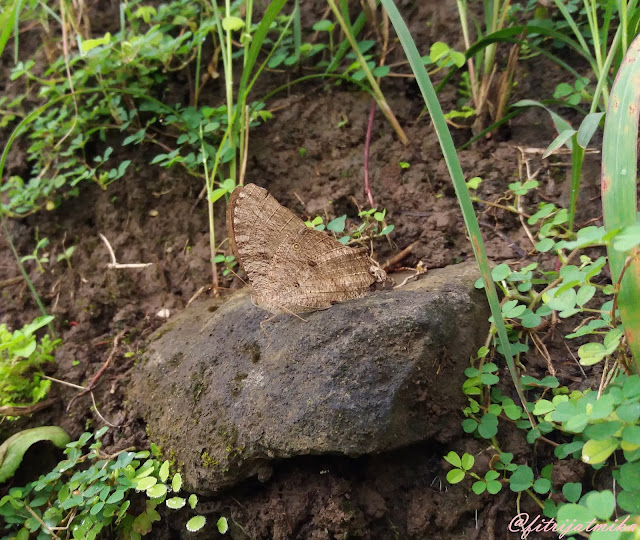I found this butterfly in rice fields. Its colours like their surrounding environment particularly the ground and the litter.
It's quite tame to approach. So, I can take their pictures. But, it is hard to take their upperside pictures. Because I never see they open their wings when they perched, like E. hypermnestra, L. nina and A. phidippus.
Scientific Name
|
Melanitis ieda
|
Common Name
|
Common Evening Brown
|
ID iNaturalist
| |
Location
|
Sumedang, West Java
|
Gear
|
Samsung J5 (2015)
|
Date
|
March 5, 2019
|
Classification
| |
Class
|
Insecta
|
Order
|
Lepidoptera
|
Family
|
Nymphalidae
|
Subfamily
|
Satyrinae
|
Species
|
Melanitis
|
Subspecies
|
ieda
|
Description
|
Upperside: Dark brown with a black subapical patch bearing two white spots and inwardly shaded with orange-brown [1].
Underside: The very variable underside is buff or grey, with fine dark striations. A submarginal row of yellow-ringed ocelli is usually found in the typical example. The variations in undersides seem t be related to the wet and dry season [1]. |

(Butterfly of Singapore, 2018)
References
1. ButterflyChecklist. http://www.butterflycircle.com/checklist/showbutterfly/115





Comments
Post a Comment